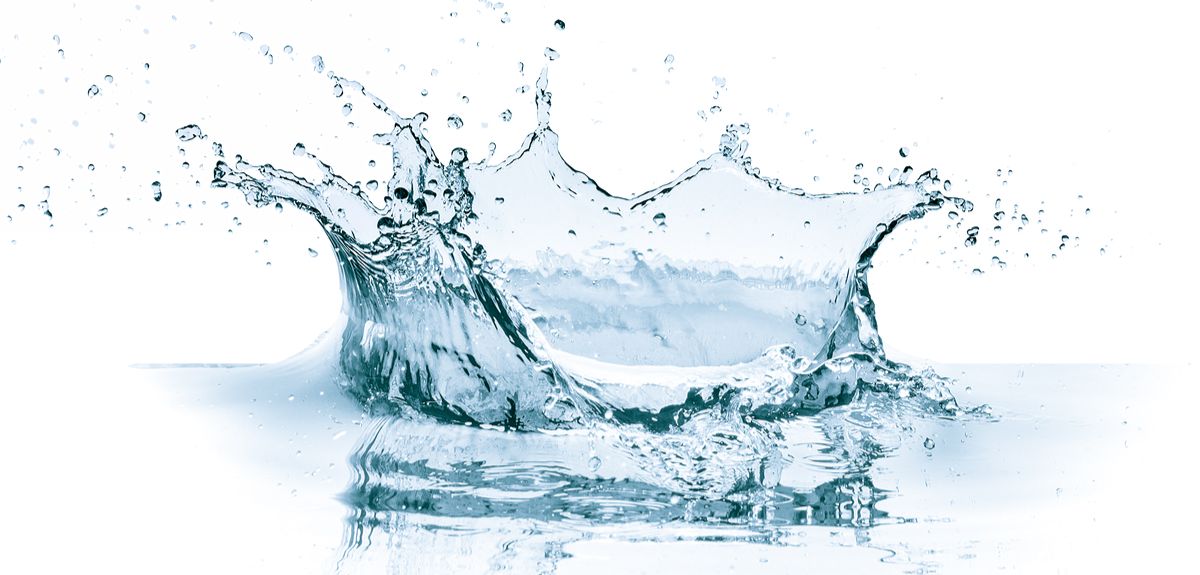
Image credit: Shutterstock
The research that definitely isn't making a splash
When a drop of liquid hits a surface at a sufficiently high speed, it splashes – that much isn't in doubt. But sometimes splashing isn't helpful. Researchers are working on methods of 'splash avoidance' that could prevent splashback of harmful or unhygienic fluids in a range of settings, from hospitals to kitchens – and perhaps even urinals.
In a new paper led by scientists at the University of Oxford and published in the journal Physical Review Letters, researchers show that coating a surface in a thin layer of a soft material like a gel or rubber could provide a simple solution to this problem.
Lead researcher Professor Alfonso Castrejón-Pita, Royal Society University Research Fellow in Oxford's Department of Engineering Science, said: 'We realised that no one had actually studied systematically what happens when droplets hit soft substrates. In our study, we dropped ethanol droplets on to soft materials made of silicone – the material often used in bathroom sealants. Silicone is very useful, as it can be made to have different levels of stiffness, ranging from a material comparable to jelly to something with a consistency more like that of a pencil rubber.
'We filmed the impacts with a high-speed camera at speeds of up to 100,000 frames per second – around 4,000 times faster than a typical mobile phone – and then studied the splashing dynamics. Combining these experiments with some theoretical modelling and detailed computer simulations, we found that tiny deformations of the substrate occur within the first 30 microseconds after impact, which, surprisingly, can be just enough to completely suppress splashing.
'What is most surprising is that you need about 70% more energy to get a drop to splash off these soft materials when compared with hard materials. If you think of a drop falling from a certain height, we need double the height to make it splash in the softest surfaces.'
There has been little work carried out into splash avoidance. It has been demonstrated that droplets in a vacuum don't splash, and droplets hitting a thin, elastic membrane are much less likely to splash. Moving the substrate at high speeds may suppress splash on one side of the drop but enhance splash on the other side. No one as yet has looked at how simple coatings could provide all-round splash protection.
Professor Castréjon-Pita said: 'We believe soft surfaces with the correct stiffness could be used in a number of situations in which "dangerous" or "nasty" fluids are used. It's surprisingly easy to for droplets to turn into aerosols or sprays when they splash: a drop of a typical solvent such as ethanol or methanol will splash if dropped from a height of around 20cm and will generate droplets of that material that can be carried away by air. So if you're working with dangerous chemicals or biomaterials, it would be helpful to know that you won't be generating sprays or aerosols if some drops fall, exposing you to diseases or harmful materials. This is also the case with the use of instrument trays during surgery – this technique could prevent the splashing of bodily fluids.
'As for hygiene, the transmission of campylobacter or other food poisoning agents in a typical kitchen is one example. In the UK, there is a big campaign to stop people from washing raw chicken before cooking because of splashing. A surface capable of stopping accidentally spilled drops of raw chicken fluids may be useful. And the development of a splash-free urinal would also be welcome!'
Professor Castréjon-Pita added: 'There's certainly more work to be done in this area. The softer you make a material, the stickier and weaker it often becomes – two things which aren't ideal for making useful, long-term coatings. The main challenge of this work is how to overcome that. Luckily, recent work has started to develop new materials that can be soft, strong and non-sticky – like tough hydrogels – so there are certainly a lot of approaches to be explored.'